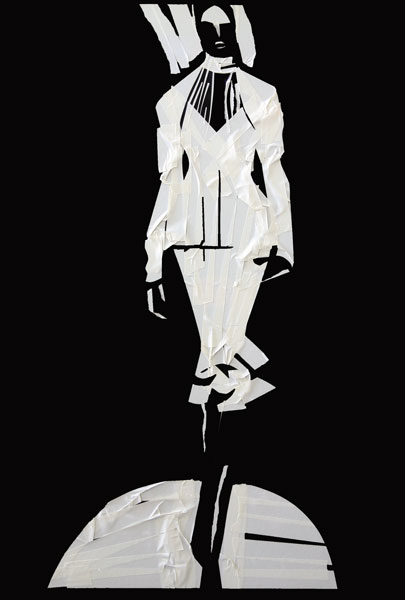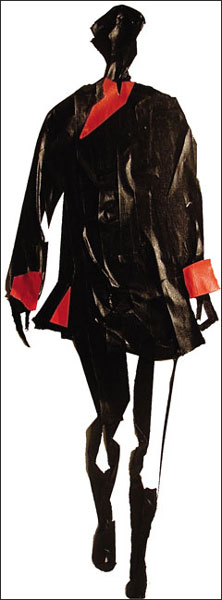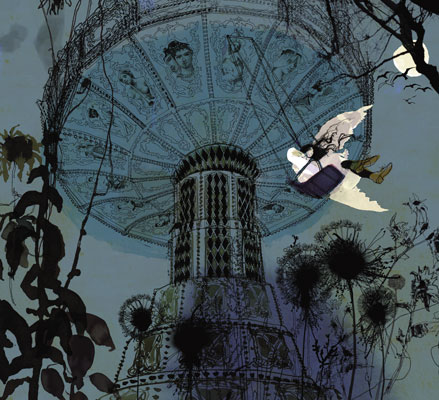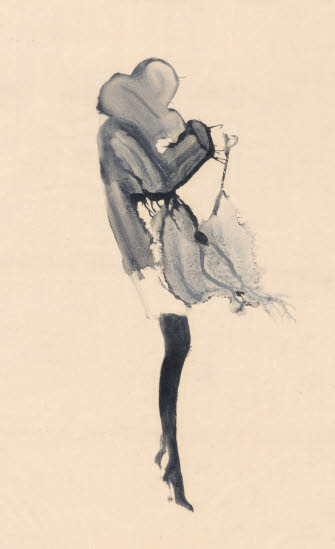Breaking the Rules
All artistic disciplines are related. The process of making a work in the discipline of dance, music, literature, theater, or the visual arts is organic. It is an ever-changing state of movement and evolution. During the process, ideas not directly related to the current work will surface and can encourage a different line of thought or reason—a by-product of the initial idea, which can become the genesis of a new idea or direction for the artist to pursue. Artists with the foresight to recognize the value in the by-product generated by the initial idea will always have an edge in developing new work. These by-products are generated by accident, but the process of developing new work can also be engineered by the illustrator. This is the process we will explore in this chapter.
Illustration today necessitates that the artist not only be prolific but versatile. As an illustrator you may be called upon to create a mural or a textile pattern, design a book cover, webpage or site, storyboard a movie, or create an animation. Developing a strong, unique style will highlight and set your work apart from others. The upside is that this will guarantee you attention and exposure. The downside is that the style will eventually become dated and you will have become over-exposed or too well known as a practitioner of that one style.
As illustrators we are entertainers; we entertain the eye of the viewer and keep them engaged in the work. So, we need to come up with new tricks or styles that reinvent our vision and ideas to establish a new body of work. The ability to reinvent a style is an advantage that will prove invaluable during the course of your career.
Knowledge is power.
Breaking the Rules
Having completed the exercises in this book, you now understand the options and possibilities inherent in allowing the words of the vocabulary to influence your drawing and illustration. Knowing the rules, you can now break them; your personal vision, guided by thought, observation, and selectivity, will aid you in discarding what is not essential to that vision and retaining what will resonate in your work.
Having the confidence to break the rules is vital to your progression as an illustrator; breaking the rules is the genesis of reinventing your vision and style. Courage should be your constant companion when exploring new possibilities. They may provide the spark that leads you to a new style.
Break the Rules and Explore New Avenues
In order to reinvent your work, you need to first recognize what is your typical pattern or process of creating work. Everyone has a specific process; only when that process is reinvented will a new one emerge. So, recognize your pattern of making work and break it, mix it up, do the reverse, and explore other venues to recreate the process. Why not try some of the following?
If you draw with your right hand, why not switch to your left hand to examine the difference of the end result? This will also sharpen your use of the right hand.
If you always start a drawing at the top of the figure or visual, why not start at the bottom and work your way up? Or begin on the left side and work toward the right, or begin in the center and have the visual spiral out to the edges of the paper?
If you always begin with an exterior contour drawing, why not start by doing an internal drawing of value without line?
Why not create a drawing, rub it out, and create a new drawing from the history of the initial drawing?
Do a positive then a negative drawing.
Why not draw fast and furiously when you would usually draw slowly and vice versa?
Why not do a hundred small drawings in a day? Witness what will emerge when you begin to tire of your pattern and invent new solutions to accomplish the task.
Change your medium and color palette. Recognize which colors are most often used in your color palette, and use the complement of those colors to see what emerges.
If you always use gouache, use oil stick; if you use pastel, use watercolor; if you constantly use a dry medium, use a wet one.
Do a drawing or painting with a stick, twig, rock, sponge, or balsa wood.
If you always draw, then paint; if you always paint, sculpt or create a collage, lino-print, or woodcarving.
If you always draw on paper, draw on another surface; if you paint on canvas, paint on wood or vinyl.
If you always draw on white, why not draw on black?
If you always use neutral colors, switch to brights.
Place an assortment of colors nearby, close your eyes and select five colors to use.
Last but not least, remember that accidents are your best friends and darlings are your enemies. Allow accidents to occur, even encouraging an accident here and there. Use an accident to create an entirely new piece of work.
Darlings are those specializations that can become your trademark style. When the trademark becomes more prominent and begins to dictate the work then the work will become stale. Only by letting go of your darlings will you forward your work in a new direction.
In other words, break the rules, those self-imposed and those dictated by others. Do so confident in the knowledge that you have an informed choice; a choice that will forward your vision and success as an artist and illustrator.

Study the compelling images of Daniel Egnéus and it is obvious that you are witnessing a successful marriage of life and art. Egnéus’s versatility in drawing, painting, and architecture allows him to filter fantasy and personal concepts through a visual mixture of extreme perspective, fashion, and style. The images, which are always evolving, are stunning in execution, provocative in concept, and unforgettable.
Breaking the Rules

Aurore de la Morinerie combines a passion for art, fashion, nature, and culture to execute fashion illustration images that are at once economical, sophisticated, and luxurious. De la Morinerie knows how to move paint, whether through a brush or through the chance of a monotype. A background in Chinese calligraphy nurtures a confidence that allows her to move beyond the usual notion of watercolor or ink drawings to highlight the medium as muse.

Tina Berning’s work blurs the boundaries between fine art and illustration through a mixture of ideas and use of media. Chance, accident, and emotion are incorporated easily into the work, as are paint, graphite, pastel, and collage. The end result elicits visuals that are always striking, expressive, unexpected, and fresh.



To be a successful illustrator, one has to be prolific, curious, and a master of various styles and techniques. Carlos Aponte is all of the above, as evidenced by his extensive body of work, both figurative and graphic. Aponte’s creative streak is not limited to his graphic concoctions. He is also an adept draftsman, a skill that is obvious in his fashion illustrations. A graphic sensibility underlies these three-dimensional images, sculpted from tape, which emerge through an orchestrated play of positive and negative shapes.



